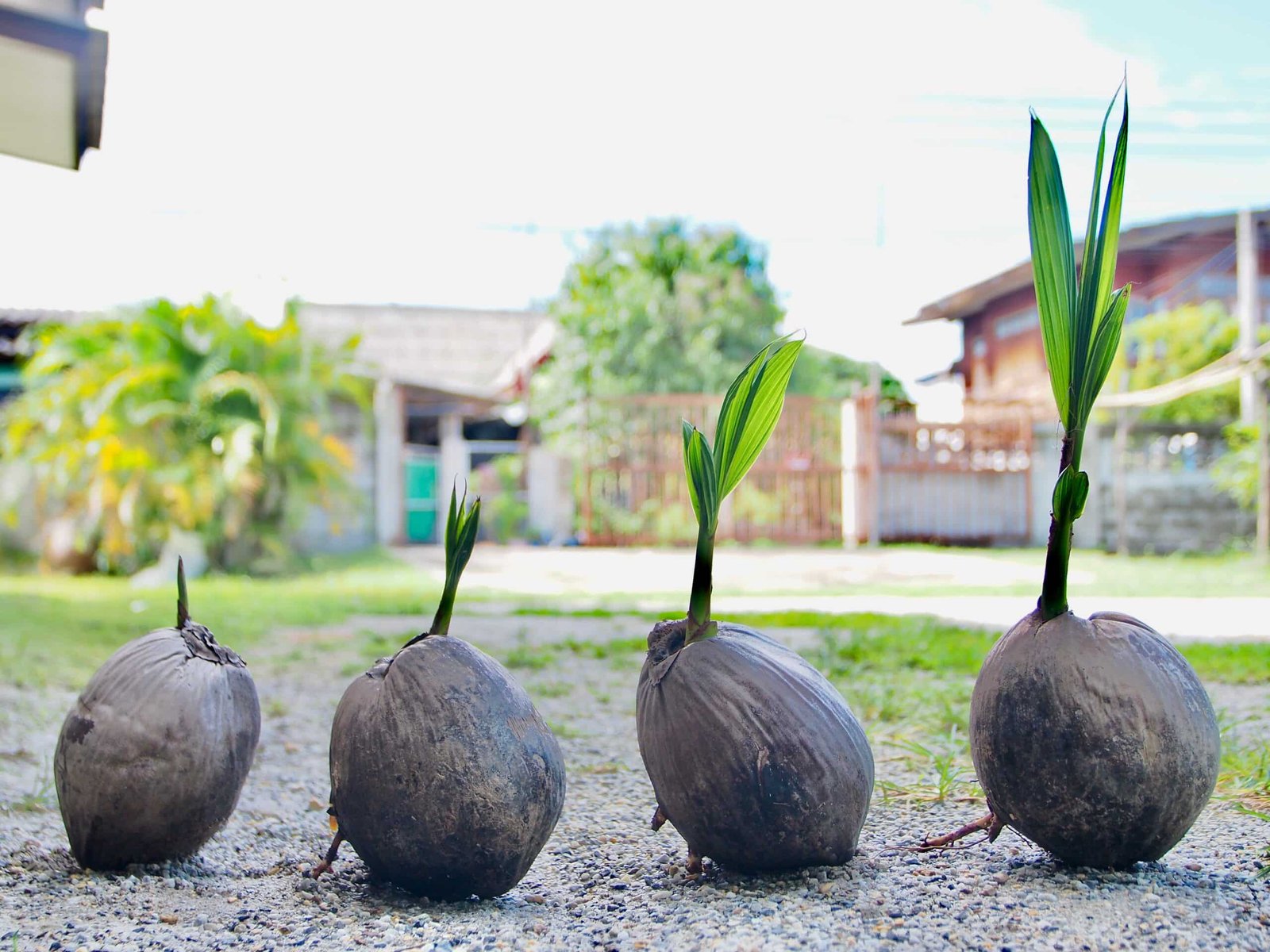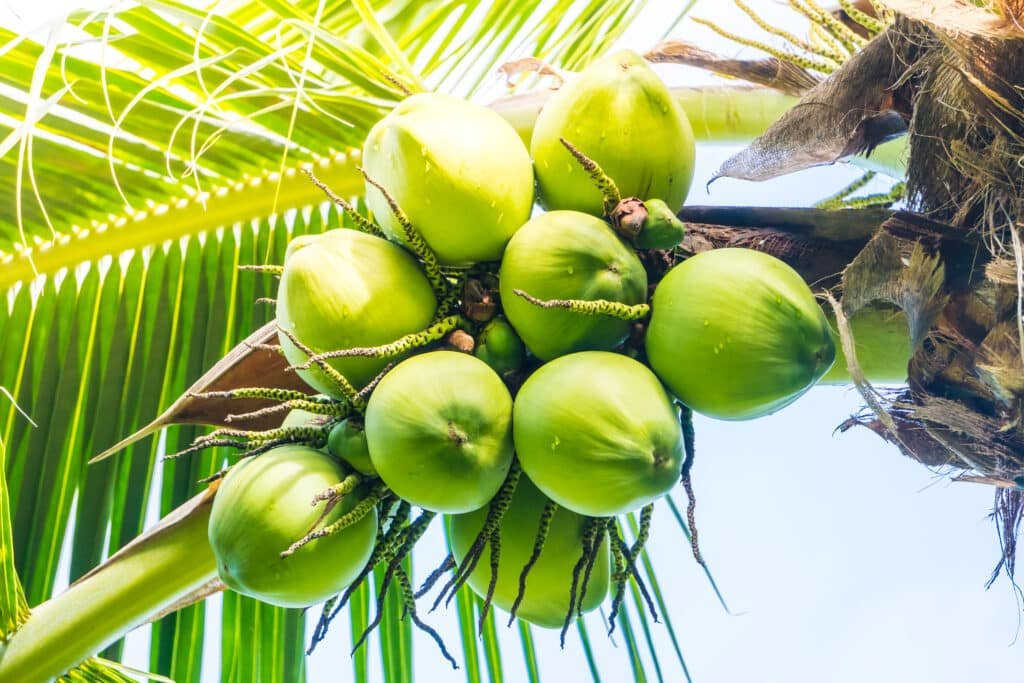Latest News
Coconut Farming Guide | How to Start and Profit from Coconut Cultivation in India

Coconut farming is one of the most profitable and sustainable agricultural practices in India, especially in coastal states like Kerala, Tamil Nadu, Andhra Pradesh, Karnataka, and Maharashtra. Known as the “tree of life,” the coconut palm provides food, oil, fiber, fuel, and even construction materials. With rising demand for coconut products both domestically and globally, coconut cultivation presents an excellent opportunity for farmers looking to diversify their income.
🌴 Why Coconut Farming?
Coconut is a versatile crop with a high market value. From fresh nuts and tender coconut water to coconut oil, coir, and copra, the entire tree can be monetized. Moreover, coconut palms are hardy, long-lived, and suitable for intercropping, making them ideal for sustainable farming models.

🌦️ Ideal Climate and Conditions
Coconut thrives in hot, humid tropical climates.
-
Temperature: 27–32°C is ideal.
-
Rainfall: 1000–3000 mm annually, evenly distributed.
-
Sunlight: Minimum 6–8 hours of direct sunlight.
-
Altitude: Grows well up to 600 meters above sea level.
Avoid areas prone to frost or prolonged drought without irrigation.
🏞️ Soil Requirements
Coconut palms grow in a wide variety of soils but perform best in:
-
Well-drained sandy loam or laterite soil
-
pH: 5.5 to 7.5
-
Avoid: Waterlogged, saline, or rocky soils
Good drainage is essential to prevent root rot and enhance root development.
🌱 Choosing the Right Variety
There are three main categories:
-
Tall Varieties (e.g., West Coast Tall, East Coast Tall): Live longer and yield more over time.
-
Dwarf Varieties (e.g., Malayan Dwarf, Gangabondam): Early-bearing, suitable for high-density farming.
-
Hybrids (e.g., Kera Sankara, Chandra Sankara): Combine high yield with early fruiting.
Choose varieties based on your climate, market needs, and land size.

Green Coconut fruit on coconut tree
🔨 Land Preparation and Planting
-
Land Clearing: Remove weeds and debris. Plough and level the field.
-
Pit Size: 3 ft x 3 ft x 3 ft.
-
Soil Mixture: Fill pits with topsoil, compost or FYM (Farmyard Manure), neem cake, and sand.
-
Spacing:
-
Tall: 7.5m x 7.5m (175 palms/ha)
-
Dwarf: 6.5m x 6.5m (230 palms/ha)
-
-
Best Planting Time: Monsoon onset (June–July) or post-monsoon (Sept–Oct)
Water immediately after planting and provide shade for young seedlings.
💧 Irrigation and Water Management
Though coconut is drought-tolerant, proper irrigation significantly improves yield.
-
Young Palms: Every 3–4 days
-
Mature Palms: Every 7–10 days
-
Methods: Drip irrigation is efficient and conserves water.
Mulching with coconut husk or dry leaves helps retain soil moisture and reduce evaporation.
🌾 Fertilizer and Nutrient Management
Balanced nutrition is key to high coconut yield.
Annual dose per tree (after 3 years):
-
Nitrogen (N): 500g
-
Phosphorus (P): 320g
-
Potassium (K): 1200g
-
FYM or compost: 50 kg
-
Micronutrients like boron and magnesium if needed
Apply fertilizers in two split doses: pre-monsoon and post-monsoon.
🐛 Pest and Disease Control
Common Pests:
-
Rhinoceros Beetle: Use pheromone traps, neem oil spray
-
Red Palm Weevil: Remove infected trees, use biological control
-
Coconut Mite: Spraying neem oil and sulfur
Common Diseases:
-
Bud Rot: Caused by Phytophthora, controlled with Bordeaux mixture
-
Stem Bleeding: Treated with Trichoderma or Bavistin paste
Regular field monitoring is essential for early detection and control.
🌾 Intercropping for Extra Income
Coconut farms can support intercropping with:
-
Vegetables: Beans, okra, chilies
-
Spices: Ginger, turmeric
-
Fruits: Banana, pineapple
-
Legumes: Groundnut, cowpea
This not only improves income but also enriches soil fertility and reduces weed growth.
🥥 Harvesting and Yield
-
Bearing Age: 6–7 years for tall, 3–4 years for dwarf/hybrids
-
Harvest Cycle: Every 45–60 days
-
Average Yield: 50–100 nuts per palm/year depending on management
Regular harvesting ensures better nut quality and consistent yields.
💼 Profitability and Market
With proper care and good management, a coconut farm can yield significant returns. Selling fresh coconuts, tender coconut water, dried copra, or value-added products like virgin coconut oil increases income potential. The demand for organic and export-grade coconut products is rising.
❓ FAQs on Coconut Farming
Q1: How many coconut trees can be planted per acre?
A: You can plant around 70–80 tall varieties or up to 100–120 dwarf/hybrid trees per acre, depending on spacing.
Q2: What is the average income from 1 acre of coconut farm?
A: Depending on yield and market rates, net annual income can range from ₹75,000 to ₹1.5 lakh per acre.
Q3: How long does a coconut tree live?
A: Tall varieties can live and produce for 60–80 years, while dwarf varieties last around 40–50 years.
Q4: Can coconut be grown organically?
A: Yes, organic coconut farming is viable using compost, green manures, and bio-pesticides. Certification increases export potential.
Q5: What is the best season to plant coconut trees?
A: The start of the monsoon (June–July) is ideal. However, post-monsoon planting is also effective if irrigation is available.
Conclusion
Coconut farming is a sustainable and profitable venture for farmers in tropical regions. With proper planning, the right variety selection, and good management practices, farmers can achieve high yields and consistent income. Intercropping, organic methods, and value addition further enhance profitability. As demand for coconut products grows globally, coconut cultivation offers long-term benefits for both small and large-scale farmers. Embracing modern techniques and regular maintenance ensures a healthy plantation and a secure future in agribusiness.













